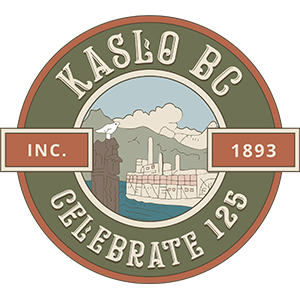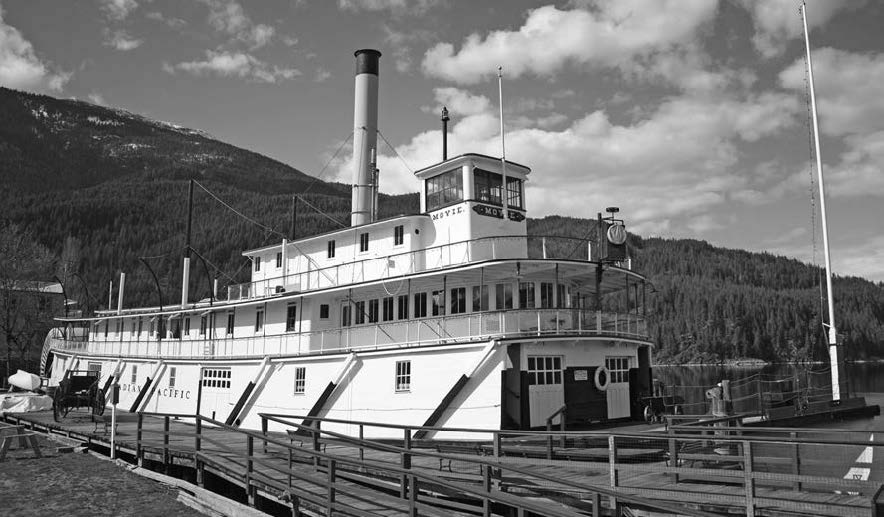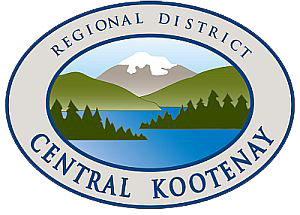Article by Jan McMurray originally published in the Kaslo Claim by The Valley Voice.
Cover image caption: The SS Moyie rests in her berth on Kaslo’s waterfront. The vessel served the communities of Kootenay Lake from 1898 to 1957.
On April 27, 1957, the crowds came out to say farewell to the SS Moyie on her last run from Procter to Argenta and back again. Today, the crowds continue to come out to see this beautifully preserved sternwheeler –Kaslo’s signature heritage attraction.
By the 1930s, most sternwheelers had been taken out of service, but the Moyie plied on to be the last sternwheeler to operate in Canada, and is now the oldest intact passenger sternwheeler in the world. The ship is a National Historic Site and a BC Historic Landmark.
As it became clear that the Moyie’s retirement day was soon in coming, the people of Kaslo successfully rallied to save her, with leadership from Jack Morris, alderman and president of the Board of Trade at the time, and his friend, Noel Bacchus. The CPR was convinced to sell the vessel to the City of Kaslo for $1, and the Kootenay Lake Historical Society was formed to preserve her.
The ship was towed from Procter to Kaslo Bay on May 18, 1957 by the Granthall tugboat, and stayed there for almost a year while the site of her permanent home was being prepared for her. In July 1958, she was moved along the shore and carefully set in place on the beach at the bottom of Kaslo’s main street. That was BC’s centennial year. The Province provided a $7,500 grant for the project, and the community raised $2,500.
The Moyie was the community’s museum for the first 30 years. Noel Bacchus was the first president of the society and the Moyie’s first curator, and he lived on the ship until his death in December 1960. The SS Moyie was declared a National Historic Site in 1978, with a plaque unveiling on August 7.
By the 1980s, the ship was suffering from serious structural problems. In 1987, Parks Canada offered the Kootenay Lake Historical Society a $175,000 grant for preservation work, as long as the grant could be matched. The society launched the SOS (Save Our Ship) campaign, and raised an impressive $82,000 in the small village of Kaslo. A BC Lottery grant of $100,000 clinched the deal.
And so began the preservation work from 1988 to 1991 that was nothing short of heroic. By that time, there were no sternwheeler repair workers around for hire, so the crew had to be extremely resourceful. The entire ship was restored, and every effort was made to keep the historic fabric of the ship intact when possible.
New Denver resident Ken Butler was hired as the project manager in November 1988, with then Kaslo resident Dan Pasemko as head carpenter. Dick Smith, who ran Kaslo Shipyards, built a new steel cradle for the paddlewheeler, and George Brinkman of Boards by George in nearby Meadow Creek custom-cut wood to match the original 1898 specifications.
“It was one of the most difficult but rewarding jobs I’ve ever had the honour of doing,” said Ken Butler, project manager from 1988 to 2006, in a recent interview. “There was a multitude of people who were staunch supporters and stewards of the ship. Without all of those passionate people, we could never have done it.”
The crew removed layers of paint from the walls and linoleum from the floor of the dining saloon to discover the original elegant parquet floor and exquisite gold leaf stencilling on the walls. In the window wells and other nooks and crannies, they found cards, letters, toys, menus, school notebooks, and all kinds of things that brought the ship’s past to life. They also found, of course, a lot of rot and rust – the unrelenting adversaries of the preservation of the vessel. Bill Yeo, a member of the KLHS board since 2006 (president 2007-2018) and current chair of the society’s curatorial committee, recently said the Moyie constantly reminds us that “rot and rust never sleep.”
In 1989, the Moyie was designated a BC Historic Landmark and granted $250,000. These funds were used to continue the restoration work on the ship, and to build a dock and interpretive centre. The new dock and visitor centre, a replicate of the CPR station that was located in Kaslo Bay until the 1980s, opened to the public in spring 1991.
Since then, the society, with community and government support, has done a wonderful job of keeping up with the maintenance of the 1898 ship.
In summer 2013, the sponson beams that protect the paddlewheel mechanism were replaced under the guidance of local master carpenter Christopher Petersen, and with funding from Parks Canada and Kootenay Savings Community Foundation. The beams were cut from old growth fir – just the kind of strong, straight-grained wood CPR shipwrights would have sought in the Moyie’s heyday.
In 2017, the paddlewheel cover was rebuilt by Petersen and his helpers with funding from Columbia Kootenay Cultural Alliance, Kaslo and District Community Forest Society, Kootenay Savings Community Foundation, and General Paint.
A new fire suppression system was completed in April 2018. Trainor Mechanical of Nelson replaced the old system, which consisted of pipes filled with compressed air. Installed in the early 1990s, the old pipes were corroding due to condensation. The new pipes are filled with nitrogen gas under pressure, which will mitigate against condensation. Because the Moyie is not heated in winter, the pipes cannot be filled with water. The new fire suppression system was funded by Parks Canada and Columbia Basin Trust, with contributions from KLHS members and friends of the Moyie.
The ship is open mid-May to mid-October and is well worth a visit. Memberships are available at very reasonable rates and donations are gratefully accepted to “help keep the boat afloat.”








